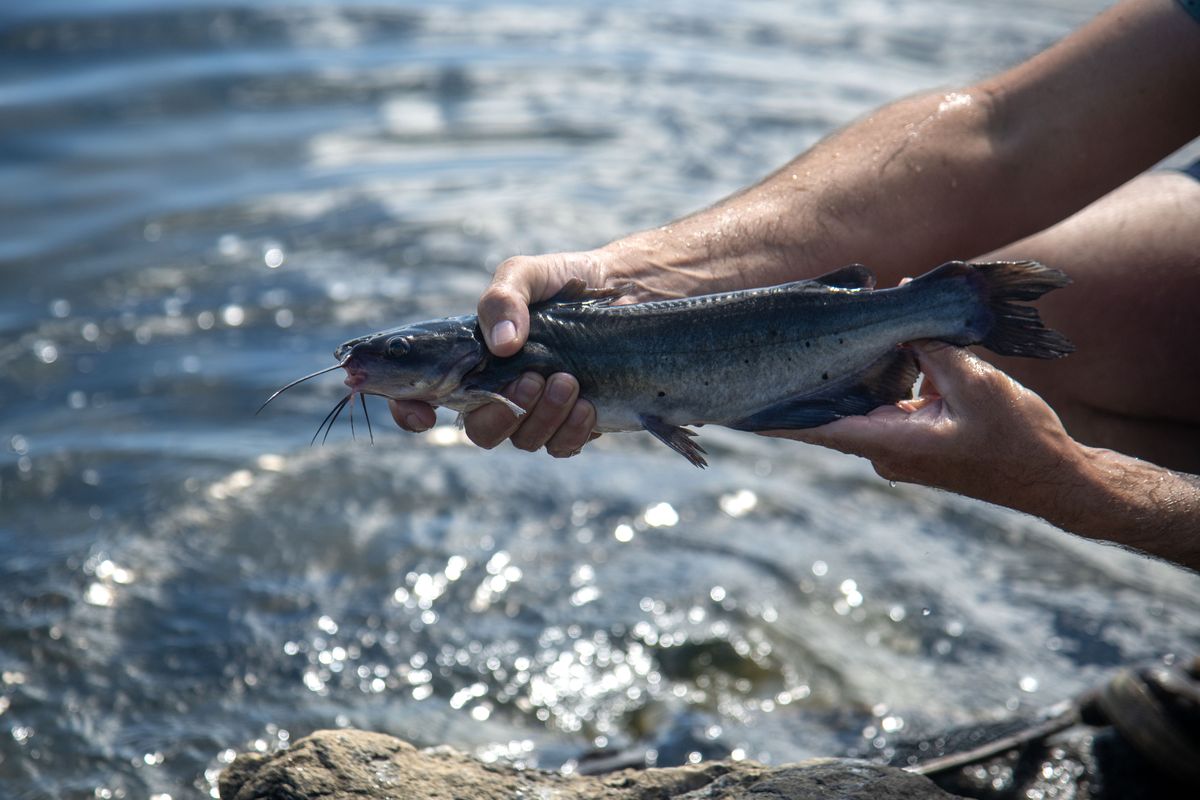Channel catfish stocked in Liberty Lake for the first time in 10 years

Before the hatchery truck backed down the ramp and set all of the fish free in Liberty Lake, Danny Garrett wanted a photo.
It’s not every day that he gets to hold a channel catfish.
Garrett, the Washington Department of Fish and Wildlife’s eastern region warmwater fish biologist, took a netful down to the lake and held one gently over the water.
It was a little more than a foot long, weighed probably about a pound. Its whiskers stuck straight out of its face.
A few photos were taken, and the fish was let go.
The fish was one of 2,000 channel cats that was stocked in Liberty Lake in late June, and one of about 12,000 that was planted in 12 lakes around the state this summer.
It’s the first time WDFW has stocked channel catfish in lakes in a decade, and it’s part of a new push to revive fishing opportunities for this popular table fare in lakes around the state.
Ken Behen, WDFW’s warmwater program manager, said this year’s catfish plants are the first part of a three-year plan to beef up channel cat populations in lakes around the state. The hope is that by 2026, the state will have stocked close to 100,000 catfish in lakes around the state.
“We want to get these populations established,” Behen said.
Catfish are not native to Washington, but several species have been stocked over the years and still persist, including three types of bullhead. Channel cats are likely the most popular catfish species in the state, according to WDFW.
They live longer and grow bigger than bullhead, often reaching lengths of more than 20 inches. Some of them can live 15 to 20 years and reach sizes of 30 inches and weights of more than 30 pounds.
People love to catch them. Behen conducted angler surveys several years ago on catfish, and he recalls meeting with anglers who were out looking for the fish in the middle of the night – a prime time for hooking lunkers on odorous baits.
“There’s a very dedicated constituency of folks that love fishing for catfish,” Behen said.
There are naturally reproducing channel cat populations in a handful of river systems, including the Columbia and the Snake.
In lakes, however, the fish are unable to reproduce. That means the opportunity to catch channel catfish in lakes has been dwindling since the state last stocked them in 2014.
Putting more fish in the lake is essential to keep the fishery going, but stocking them is expensive. There aren’t many suppliers – the 50,000 that were stocked in 29 lakes in 2014 came from a hatchery in Arkansas – and transporting them long distances was costly enough to essentially pause the state’s stocking program for a decade.
A solution arrived this year in the form of a supplier in southeast Idaho, which happened to be using broodstock fish from the Arkansas hatchery WDFW used a decade ago. WDFW’s own hatchery staffers handled the trucking, and all-in-all the effort cost about $60,000, Behen said. In years past, he’d received transportation quotes that were nearly double that.
They had a limited number of fish to spread across the 12 lakes, and they parsed out the disbursements by size. Liberty’s 2,000 was one of the larger allotments, and it was the only lake in Spokane County to receive the fish. The next-closest lake to receive them was near Kennewick.
The lakes that got catfish were selected because they don’t have native species like anadramous salmon or steelhead that could face problems from competition or predation from the new residents.
It’s just the start. Behen said they hope to get 30,000 fish to stock next year and 50,000 the year after that. The state will monitor the growth of the catfish and conduct creel surveys to learn about how successful anglers have been in catching them
.
“I’ve already seen pictures of folks catching fish around the 13- to 14-inch mark and bringing them home,” Behen said.